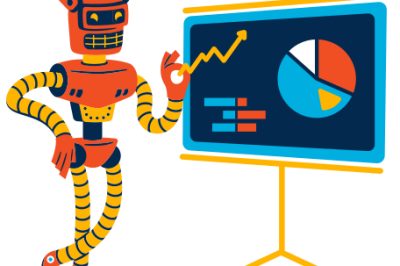If you’re interested in investing, you might have heard of technical analysis. Technical analysts are the professionals who use this method to analyze stocks, commodities, and other financial assets. In this article, we’ll explore what technical analysis is, how it works, and what technical analysts do on a day-to-day basis.
Table of Contents
- What is Technical Analysis?
- The Role of Technical Analysts
- Types of Technical Analysis
- Tools Used by Technical Analysts
- Charting Techniques
- Identifying Trends
- Technical Indicators
- Analyzing Price Patterns
- Risk Management
- Developing Trading Strategies
- Backtesting and Optimization
- Limitations of Technical Analysis
- Technical Analysis vs. Fundamental Analysis
- Education and Training
- Conclusion
- FAQs
What is Technical Analysis?
Technical analysis is a method of evaluating securities by analyzing statistics generated by market activity, such as past prices and volume. Technical analysts believe that these patterns can help predict future price movements. This approach differs from fundamental analysis, which involves examining a company’s financial and economic factors to determine its intrinsic value.
The Role of Technical Analysts
Technical analysts are professionals who use technical analysis to evaluate financial assets. They use a variety of tools to analyze price trends, identify potential trade opportunities, and manage risk. Technical analysts may work for investment banks, hedge funds, or other financial institutions, or they may work as independent consultants or traders.
Types of Technical Analysis
There are two main types of technical analysis: trend analysis and oscillators. Trend analysis involves analyzing charts to identify trends in price movements, while oscillators use mathematical formulas to calculate price momentum.
Tools Used by Technical Analysts
Technical analysts use a variety of tools to analyze financial assets. These tools include charts, technical indicators, and price patterns. Some popular charting tools include candlestick charts, line charts, and bar charts.
Charting Techniques
One of the primary tools used by technical analysts is charting. Charts are used to display historical price data, which can be used to identify trends and potential trading opportunities. Charting techniques include identifying support and resistance levels, drawing trend lines, and using moving averages.
Identifying Trends
Technical analysts use charts to identify trends in the market. Trends can be classified as either bullish or bearish, depending on whether prices are increasing or decreasing over time. Technical analysts use a variety of tools to identify trends, including trend lines and moving averages.
Technical Indicators
Technical analysts also use technical indicators to help identify trends and potential trading opportunities. Technical indicators are mathematical formulas that use price and volume data to generate trading signals. Some popular technical indicators include the Relative Strength Index (RSI), Moving Average Convergence Divergence (MACD), and Stochastic Oscillator.
Analyzing Price Patterns
Technical analysts use price patterns to identify potential trading opportunities. Price patterns are formed when prices move in a certain way, such as a trend or a consolidation. Some common price patterns include triangles, head and shoulders, and double bottoms.
Risk Management
Managing risk is a crucial part of technical analysis. Technical analysts use a variety of tools to manage risk, including stop-loss orders, position sizing, and diversification. Stop-loss orders are used to limit potential losses, while position sizing helps ensure that trades are appropriately sized based on risk.
Developing Trading Strategies
Technical analysts use their knowledge of technical analysis to develop trading strategies. These strategies are designed to take advantage of market trends and price movements. Trading strategies may involve buying and selling based on technical indicators, price patterns, or other factors.
Backtesting and Optimization
Before using a trading strategy, technical analysts typically backtest and optimize it. Backtesting involves applying the strategy to historical price data to determine its potential profitability. Optimization involves tweaking the strategy to improve its performance based on the backtesting results.
Limitations of Technical Analysis
While technical analysis can be a useful tool for evaluating financial assets, it has some limitations. One limitation is that it relies solely on historical price data and may not take into account changes in economic or financial conditions that could affect the asset’s price. Additionally, technical analysis can be subjective, as different analysts may interpret the same data differently.
Technical Analysis vs. Fundamental Analysis
Technical analysis and fundamental analysis are two different approaches to evaluating financial assets. Fundamental analysis involves examining a company’s financial and economic factors to determine its intrinsic value, while technical analysis focuses on analyzing price and volume data to identify potential trading opportunities.
Education and Training
To become a technical analyst, you typically need a bachelor’s degree in finance, economics, or a related field. Some technical analysts also obtain professional certifications, such as the Chartered Market Technician (CMT) designation.
Conclusion
Technical analysts play an important role in evaluating financial assets using technical analysis. By analyzing price and volume data, technical analysts can identify potential trading opportunities and manage risk. While technical analysis has some limitations, it can be a valuable tool for investors looking to make informed investment decisions.
FAQs
- What is technical analysis? Technical analysis is a method of evaluating financial assets by analyzing statistics generated by market activity, such as past prices and volume.
- What tools do technical analysts use? Technical analysts use a variety of tools, including charts, technical indicators, and price patterns, to evaluate financial assets.
- How do technical analysts manage risk? Technical analysts manage risk by using tools such as stop-loss orders, position sizing, and diversification.
- What is the difference between technical analysis and fundamental analysis? Technical analysis focuses on analyzing price and volume data, while fundamental analysis involves examining a company’s financial and economic factors to determine its intrinsic value.
- What education and training do you need to become a technical analyst? To become a technical analyst, you typically need a bachelor’s degree in finance, economics, or a related field, as well as professional certifications such as the Chartered Market Technician (CMT) designation.
